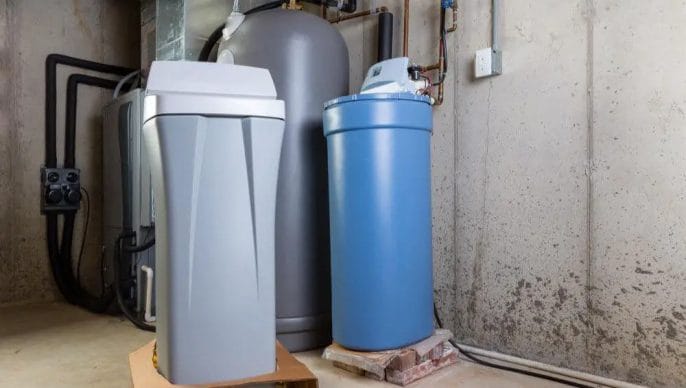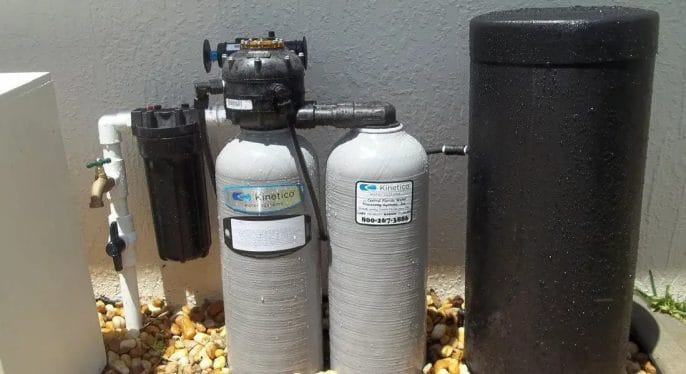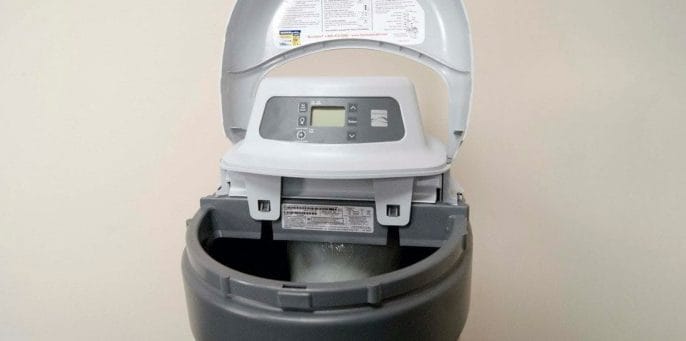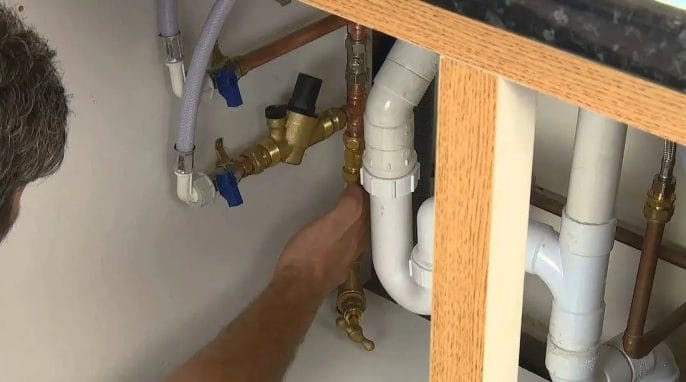Ge water softener installation should be done by a professional if your water is hard to the point of causing damage to your plumbing. If you don’t have a professional handy, you can install the softener yourself. Installation involves running an outside pipe to the house’s internal plumbing, which requires a licensed plumber. After this is complete, the actual water softener unit can be installed on your basement wall or floor. The softener should include installation instructions, but here are some general instructions:

A water softener must be installed so that it sits on top of the water line or pipe. Only a small amount of water should be between the softener and the waterline. If you don’t have enough distance, the pipes can weaken, possibly leading to leaking. The hard or sugary water pipes (the ones near the washing machine and toilet) shouldn’t be submerged for the water softener to work properly. This is an easier thing to do if you know how to do plumbing. Where to place a water softener? Place the water softener in the middle of the room with the cleanest water. Most basement water softeners sit on a hard, non-slippery surface, with the softener itself sitting about 10 feet from the house.
1. Installation location

Begin by finding the ideal location for your new softening system.
GE recommends installing the GXSF30V inside in an area with no freezing temperatures or direct sunlight. Any damages that occur from freezing temperatures or direct sunlight will void the warranty.
Also, install the system as close as possible to where the main water line enters your home. As a result, all the water will be soft before getting distributed throughout the house. And last, you’ll need an electrical outlet, and a suitable drain.
2. ge water softener installation steps

- Shut off the main water supply before performing any work on the pipes. It would help if you found the major water supply to turn it off.
- Open every faucet in your house to drain any remaining water from the plumbing system. This will help you prevent future plumbing issues.
- The grommet is a rubber ring that goes around the hole in the back of the tank. It will keep the elbow in place.
- To remove the unit’s top cover, you must first remove the two screws located underneath the unit.
- Disconnect the clips from the bypass valve inlet and outlet ports.
- Check for debris in the valve. Also, check that the turbine spins freely.
- O-rings are the most common cause of high-pressure leakage. Coat them with silicone grease before installation to make sure they’re sealed.
- To install a bypass valve, place it into the softener valve. Push it in as far as possible. Secure the two large holding clips to keep them in place.
- You can put the softener into the dishwasher at the beginning of the cycle which is the best place for it. It will start working as soon as the dishwasher fills with water and will dissolve completely.
- Make sure to connect the inlet and outlet ports of the bypass valve to the main water pipe. Ensure that you cover all external pipes with Teflon tape threads and take care not to turn a pipe fitting onto a plastic fitting upside down.
- The drain port elbow is pushed into the valve drain port. It is secured with the clip.
- Attach the 3/8′′ drain line to the valve drain fitting using a hose clamp.
- Direct the drain hose to a suitable drain location. If there is no suitable drain nearby, you can always route the hose to a bucket or a container. You can secure it by using a clamp or a zip tie.
- In the next installation step, install the brine tank overflow hose. This is done by connecting the 3/8″ drain line to the elbow that runs tothe brine tank overflow. Secure the connection with a clamp.
- The pipes should be connected to the drain with a hose. The hose should be secured tightly.
- When you want to open a cold soft water faucet, you begin by turning the cold water on for a few seconds and letting it run.
- When you want to bypass the filter, you can put a softener into the bypass. This will allow you to break the bypass filter.
- Don’t just turn on the water immediately; slowly turn on the main water supply so that the pressure doesn’t build up and cause a water burst.
- Wait for the flow to steady.
- You can place the bypass valve in service position by turning it 90 degrees clockwise. (see manual)
- It’s important to let the water flow for a minute before you use it in your home. This will allow air to be released from the faucet that may have become trapped.
- All cold water faucets should be closed.
- You need to repair leaks as well, not only check for them the problem as soon as possible.
- Fill the brine tank with about three gallons.
- The brine tank is located in the back of the truck. It needs to be filled with salt.
- Plug the system into an electrical outlet. The system is designed to automatically draw power from the outlet, so you won’t need to do anything to ensure that it has power.
- The top cover needs to be replaced.
- It’s time to think about a new salt cover.
- It’s essential to sanitize the entire system according to the manual.
Where to install a water softener

The water softener must be located in the home’s main water supply line, but it can also be installed behind a water meter. The water meter at your property line is probably closest to the area you want to install the unit. Water softeners behind water meters come with a few considerations of their own. The main concern is cost. If you’re going to run the water meter outside, you can install a water softener in the same area. However, the water meter connection is much easier if you connect the water softener behind the meter. This option should cost slightly more, and it requires you to maintain a water meter to be read regularly.
Is it necessary to hire a professional to install it?

Unfortunately, if your water is already soft enough for your family, there’s no need to have a plumber install a water softener unit. If you’re looking to install a water softener, be aware that most require the services of a licensed plumber, and you’ll probably be charged more for their services. Is the installation something I should do myself? While most plumbing work can be done at home, you need to hire a licensed plumber if there is a problem with it. That said, there’s not much risk of this happening if the install is done by a professional.
Why should I install a water softener?
Installing a water softener has several benefits that are beneficial for your plumbing. One of the most important is to reduce hard water in your water. This mineral deposits into your pipes, causing them to harden and become prone to causing corrosion in pipes. The water softener is also helpful for bringing down your water’s pH to the optimum pH range, which is between 7.0 and 7.5. How does water softening affect your drinking water? Water softeners are specially designed to remove bad tastes and odors from water, make it taste better, and make it more palatable. The water will also be perfectly clean to your drinking water standards, such as the EPA.
Ge water softener installation cost
Installation of the water softener will cost between $400 to $2000, but most homeowners can install it themselves. Consider the cost of the softener, the plumbing service, the tank and the parts too.
Water softener’s advantages
The major advantages of a water softener are improved water quality and the reduction in odors. Using a water softener reduces the level of minerals, particularly calcium, in your water. Also, homeowners can reduce their water usage by using fewer softener cartridges and getting creative with other non-poisonous chemicals.
What to do before you decide to install a water softener?
Before you decide to install a water softener, it’s important to learn about its pros and cons.
GE GXSH40V 40,000 Grain Water Softener Setup and Install
Wrap Up!
Some may say that installing a water softener is unnecessary, but the benefits are undeniable for those who have hard water. By reducing the hardness in your water, you will save money on your water bills. Additionally, soft water can be very soothing and relaxing. It is important to remember that tap water contains a lot of minerals, so installing a water softener is a good idea for most customers.
A water softener can be a great addition to your home if you have hard water. Doing it yourself is simple and convenient, and you can save a substantial amount of money on your water bills. Many homeowners opt to install water softeners because they work efficiently and are simple to maintain, so why not try it?







